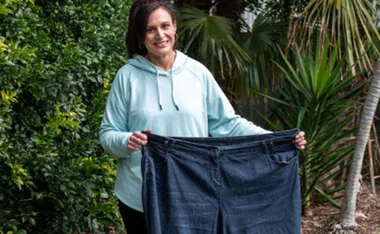The mere mention of menopause is enough to strike fear into the hearts of many women. Even though it’s a natural and unavoidable stage of life, it doesn’t stop the dread of impending hot flushes and headaches.
But do we know all the facts? Below is some helpful and practical information aimed at making preparation for the menopause just that little bit easier, so you can control this condition and not let it control you.
When we’re born, each ovary contains around a million eggs which slowly decrease through our lifetime. From about 40 onwards, the remaining eggs start to diminish rapidly as does the production of oestrogen. The menopause officially occurs when ovulation finally comes to an end, marked by the last period.
Although it usually affects women around 45-55, about 2 percent of women will go through a premature menopause before 40. This is usually caused by surgery which removes ovaries or the effect of chemotherapy on the body. The Peri menopause is the stage preceding the last cycle, when periods and hormones fluctuate dramatically; often causing the unwelcome symptoms we associate with menopause.
Related video:
Not all women suffer side effects. Only 20 percent of women suffer severe symptoms and another 20 percent never experience any. The following are the most commonly faced:
Physical
Hot flushes
Insomnia
Night sweats
Headaches
Itching sensation under the skin
Emotional
Depression
Low self-esteem
Forgetfulness
Sexual
- Lack of libido Vaginal dryness and soreness with intercourse
It’s important to realise that often there’s a domino effect at play here, where one symptom triggers another. If, for example you’re not sleeping, this will cause tiredness, which can cause irritability, which can decrease sex drive. Pinpointing the true symptoms of menopause can give hope and solutions for coping with what’s happening emotionally and physically.
Bones: Oestrogen helps the body absorb calcium for bone density. As it decreases, so does bone strength, leading to higher counts of osteoporosis.
Research shows that after the first five years of menopause, women will lose up to 10 percent of their bone mass and after age 60, about half of fractures that will occur will be due to osteoporosis.
To minimise risks of the condition, make sure to have three to four serves of dairy a day and take vitamin D to aid calcium uptake.
Vagina: Without oestrogen, the lining of the vagina becomes thin, dry and fragile, which often leads to painful sex. Lubricants and topical creams will help get sexual relationships back on track.
While many women see it as positive transition, others see it as a stark reminder of entering into the later stages of life, not to mention saying goodbye to their childbearing years. Women can find themselves questioning their identities, achievements and roles in the household, especially as older children start to leave home.
Depression is a common manifestation of all those overwhelming anxieties, especially with oestrogen levels causing mood swings. New hobbies like yoga or meditation are not only great for mind/body harmony but beneficial in cultivating new friendships.
During menopause, weight will start to shift from the hips to the central part of the body, skin will become noticeably drier and defined muscle tone may be no more. But there’s no need to settle for this. Why not put more focus on healthy eating, splurge on regular facials and regain confidence with exercise classes?
HRT or complementary medicines?
It’s still unclear whether the benefits of hormone replacement therapy outweigh the risks as a safe treatment for menopause. While HRT is certainly unsuitable for some and has been reported to increase the risk of stroke and blood clots, for many women it has been a saviour. Always consult your doctor and get the best advice for your situation.
More natural remedies are available if HRT isn’t for you. The herb Black Cohosh is reportedly effective in controlling hot flushes, mood swings and insomnia. Natural foods such as flaxseed and soy are a good source of plant oestrogens that can ease mood swings and insomnia. Acupuncture and hypnosis are also noteworthy treatments.
Don’t feel your body is giving up on you; it’s just changing a little. Remember the same thing happened through puberty with strange body changes and confusing new thoughts. It was scary but you survived the transition.
So, don’t be afraid to ask for help, whether from friends, support groups or doctors. There’s extensive resources out there just for you. After all these years, it’s finally YOU time, so don’t waste it, embrace your fresh new life!










